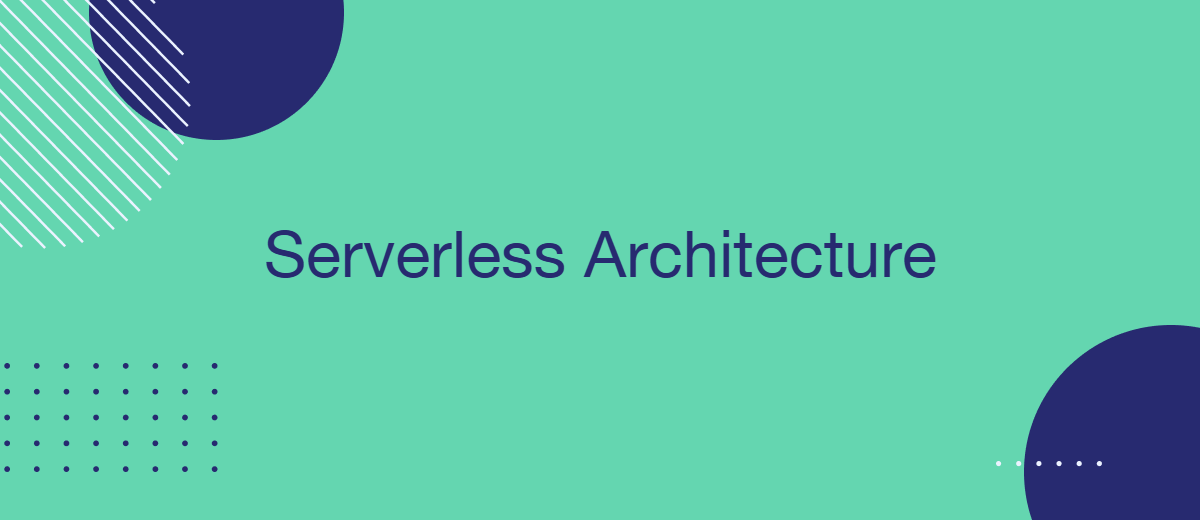Not long ago, most applications still relied on servers that developers or ops teams had to configure and maintain — even if they were virtual machines or PaaS platforms. Serverless architecture has taken this one step further, almost eliminating the need for manual infrastructure management. This innovation has significantly optimized IT development processes, making them more flexible, convenient, and productive. Given the relevance of this topic, we've dedicated our article to explaining serverless. You'll learn about what this technology is, how it works, and the most significant pros and cons of serverless computing.
What is Serverless
Serverless architecture is a cloud computing model in which the cloud provider manages all servers and infrastructure, allowing developers to create and run applications without provisioning or maintaining servers themselves. This approach eliminates the need to purchase or administer physical hardware, significantly reducing operating costs.
Instead, customers rent serverless computing resources hosted in the cloud from so-called cloud service providers. Such services are offered by major tech companies, including Amazon, Google, Microsoft, and others. Interaction between users and these solution providers occurs through APIs.
Developers rent not just virtual servers, but platforms with a suite of software tools and interfaces for launching and managing projects out of the box. This model eliminates the need to maintain hardware devices, delegating this task to a cloud provider.

The advantages of serverless architecture over traditional approaches make it highly sought after in the modern IT industry. This method optimizes and automates software development processes, thereby accelerating the time to market for products. It also reduces development and maintenance costs, improving project efficiency.
Serverless architecture is particularly popular in the most emerging and promising segments of the IT industry. It is frequently used in projects related to artificial intelligence (AI), machine learning (ML), big data analytics, and the Internet of Things (IoT).
How Serverless Works
Having described what serverless architecture is, let's proceed to a detailed description of its key components and operating principles. Serverless architecture enables the processes required for software development and maintenance to be executed in the cloud, rather than on a dedicated server. Providers of these services provide IT teams with a ready-made work environment with computing resources and tools available on demand.
Serverless computing platforms offer significantly more capabilities than dedicated servers. They offer several key features, including automatic resource provisioning and distribution, scalability management, fault tolerance, and more.
One of the key features of serverless computing is its on-demand availability. This means that the services and tools rented by developers are launched only when certain conditions are met. This model enables efficient resource utilization, resulting in substantial savings for businesses.
The main components of this technology include:
BaaS (Backend as a Service)
One of the most common service models involves outsourcing all backend elements involved in software development and maintenance. BaaS solutions are offered by cloud providers — they take on all server functions, allowing developers to spend more time creating the product's business logic and user interface.
The BaaS model allows IT teams to delegate database management, hosting, and cloud storage services to providers. These companies also handle other tasks related to program or application operation (sending push notifications, remote updates, user authentication, etc.).
FaaS (Function as a Service)
The next common model of serverless architecture allows individual software functions to be run remotely in the cloud. FaaS services are offered by cloud providers on specialized platforms with scalability and high fault tolerance. These services enable developers to quickly access the resources required to perform functions on demand during development, testing, or product maintenance.
This model doesn’t require developers to manage long-running server processes. Instead, small functions are invoked in response to events (such as file uploads, API calls, database changes, or scheduled tasks), and the cloud provider handles all underlying processes and containers. FaaS is often utilized in the development of scalable web applications, enabling the expansion of the codebase and the implementation of microservices more quickly and efficiently. Payment is based on a pay-as-you-go principle — that is, only when the functionality is used.
Benefits of Going Serverless
The benefits of serverless architecture make this technology highly sought after by modern businesses. It is used by numerous large and well-known companies to develop their services and applications, including Netflix, BMW, Coca-Cola, and others.
The main advantages of this method include:
- Increased productivity. By delegating control of infrastructure and data to cloud providers, developers can devote more time to business logic and other strategically important tasks. This increases development productivity, enabling products to reach the market faster.
- Ease of deployment. The technology enables flexible and convenient software deployment in various environments. This enables IT teams to easily adapt products to rapidly changing market conditions and evolving stakeholder expectations.
- Scalability. The resources provided by serverless cloud computing providers can be easily and quickly scaled to meet current workloads and tasks. The elasticity of such systems allows for the rapid launch, shutdown, and expansion of production environments.
- Easy synchronization. Cloud-based infrastructure enables easier and faster data synchronization between devices, ensuring stable connections and maintaining format compatibility.
- Cost-effectiveness. Serverless architecture enables you to pay primarily for actual consumption (invocations, execution time, allocated memory) instead of idle capacity. For workloads with fluctuating or low traffic, this can significantly reduce development and maintenance costs. However, for large, consistently high workloads, traditional servers or containers may prove more economical, so a cost analysis is still required.
Potential Drawbacks and Challenges
Serverless technologies have not only advantages but also certain disadvantages that limit their use in certain scenarios. Key challenges of this technology include the following:
- Lack of control over equipment. Renting cloud resources does not give users full control over the management of physical servers and other infrastructure. In some cases, this is a serious drawback, as it limits customization options.
- Stateless functions. Individual serverless functions are stateless: they don’t maintain in-memory session state between invocations. If an application requires user sessions or other long-lived state, it must be stored externally (in databases, caches, or tokens), which adds architectural complexity. Combined with execution time limits, this makes serverless less suitable for very long-running, tightly stateful operations.
- Vendor lock-in. No less significant are the serverless challenges that often cause problems for developers when switching service providers. Due to the proprietary nature of the model, switching to a different provider often requires significant changes to the codebase and reconfiguration of the entire system.
- Startup delays. The automatic startup of serverless functions often involves a delay, known as a "cold start." The latency increases due to the need to spawn a new container with the required function. This can be a significant issue for applications that require immediate response.
- Execution time limits. In most cases, cloud providers limit the execution time of automated software functions. This makes serverless architecture unsuitable for applications with long-running tasks.
Final Thoughts
Serverless architecture is highly sought after for web application development in 2025. It eliminates the need for developers to manually configure and manage servers and other infrastructure, delegating these tasks to cloud providers.
Delegating backend processes enables you to accelerate the development and testing of an IT product, enhance its scalability, and lower overall project implementation costs. Serverless computing offers numerous significant advantages and a wide range of application scenarios. It is frequently used in cutting-edge tech segments, including artificial intelligence, the Internet of Things, and big data analytics.
Are you using Facebook Lead Ads? Then you will surely appreciate our service. The SaveMyLeads online connector is a simple and affordable tool that anyone can use to set up integrations for Facebook. Please note that you do not need to code or learn special technologies. Just register on our website and create the necessary integration through the web interface. Connect your advertising account with various services and applications. Integrations are configured in just 5-10 minutes, and in the long run they will save you an impressive amount of time.
